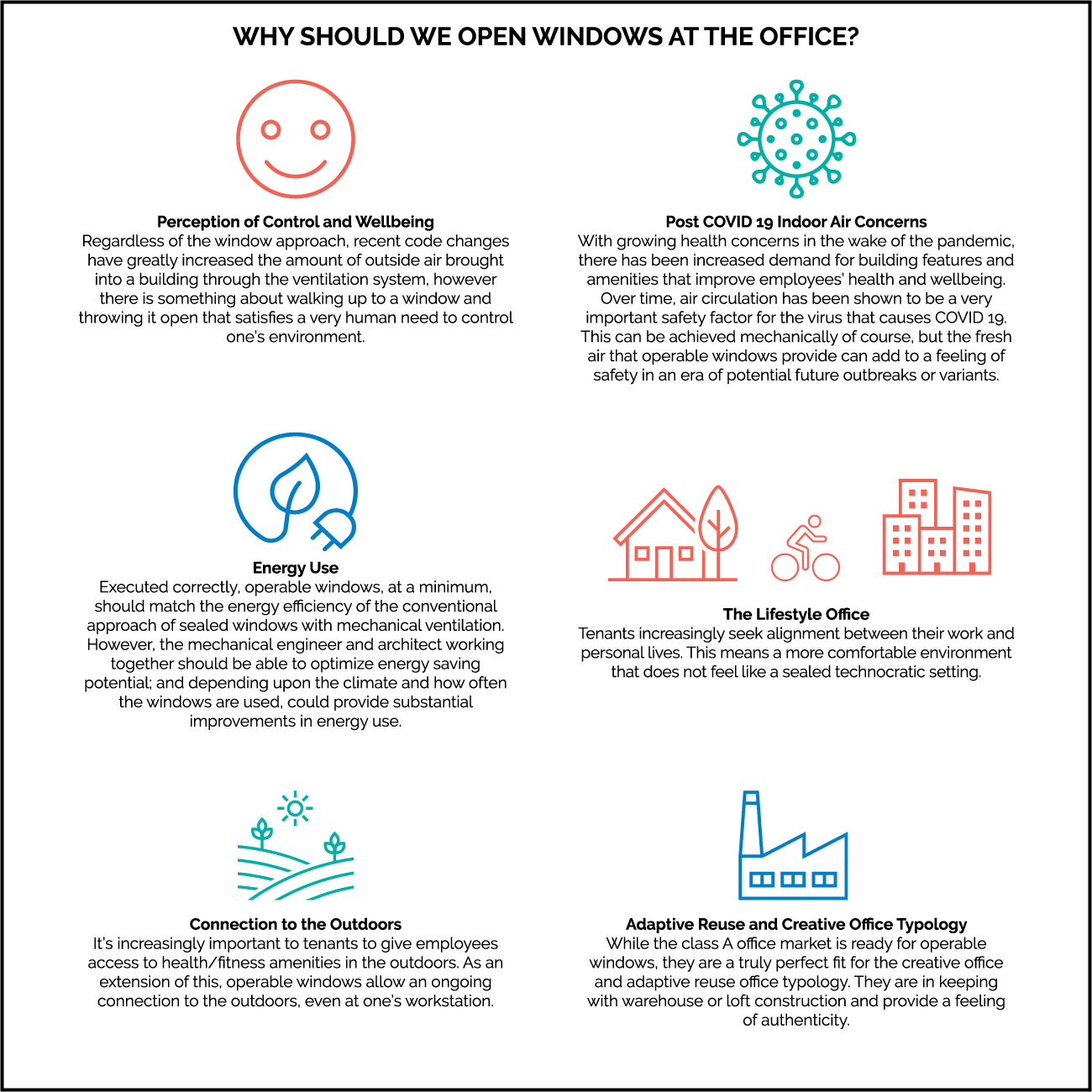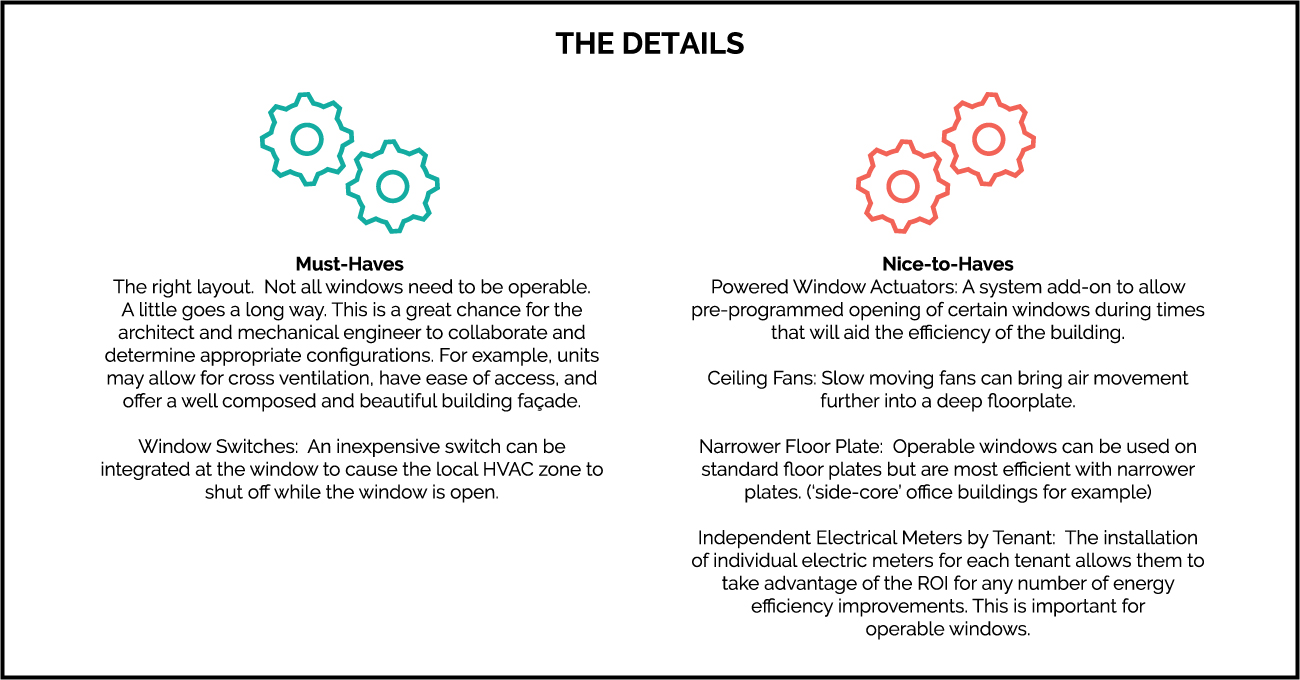
Starting off as an architect, my first experience of an office building was an older brick industrial building, with operable windows, located near the river in a mid-sized southern city. I have a vivid memory of working to finish a deadline on a summer evening.
The day had been a hot one, but after sunset, the air cooled slightly, and we threw open the sash window for some fresh air. The restaurant across the street had a jazz quartet playing on their patio. The soft breeze mixed with sounds of live music and the smell of grilled seafood, drifted through that window.
Yes, we were busily wrapping up documents, but we were reminded of the sweetness of life in the form of a well-earned beer and nice music awaiting us on the other side of work.
Fast forward to 2021, where we return to operable windows for various reasons with Covid-19 being a new driver.
Now, years later, my work centers around the design of innovative office buildings and we are talking about operable windows as a new feature of the modern office. Windows that open are certainly a very old idea. (That summer night I remember fondly took place in a 19th century building.)
But this approach went away for a long time in favor of sealed environments. Now a return to operable windows is increasingly part of the conversation with our corporate and developer clients for both existing and new buildings. There are overlapping reasons for this that range from wellness and comfort to energy efficiency, all now accelerated by the COVID-19 pandemic, where airflow is a major concern.
Why did operable windows go extinct?
Before modern air conditioning systems, office buildings had operable windows and high ceilings for air circulation. These, paired with courtyards or centralized external air shafts, allowed buildings to ‘breathe’ and stay as comfortable as possible in hot weather.
Once air conditioning became standard, it was thought to be more efficient to seal the building to provide better control of the humidity and temperature. This all occurred right about the time when modernism was pushing a minimal glass aesthetic.
Eventually, glass and aluminum curtain wall skins became the dominant approach to office buildings.
And is this changing?
Yes. But not all at once, and not completely. The advantages of a sealed building are still there and will continue to be the right approach for many buildings, but several overlapping factors are creating a demand in the market for office buildings with windows that open.
Office building tenants are looking for ways to make their workplace their own. Operable windows can have a tremendous effect in the way a building feels and functions, both in terms of increased productivity and enhanced employee happiness.
Below are some of the drivers:
Where to start?
At its most basic, implementing operable windows in an office building is straightforward and can be done without adding great expense or complexity. But care in getting the details right definitely pays off.

Sitting in my home office on a beautiful spring workday with the window open, I’m enjoying the gentle breeze and sounds of birdsong. I also enjoy being in the office with my colleagues, but I don’t relish the eight hours of white noise rumbling through the office ductwork.
It’s possible that we can have the best of both worlds.
Watch for a future piece that will focus on upgrading egress stairs as an amenity.
